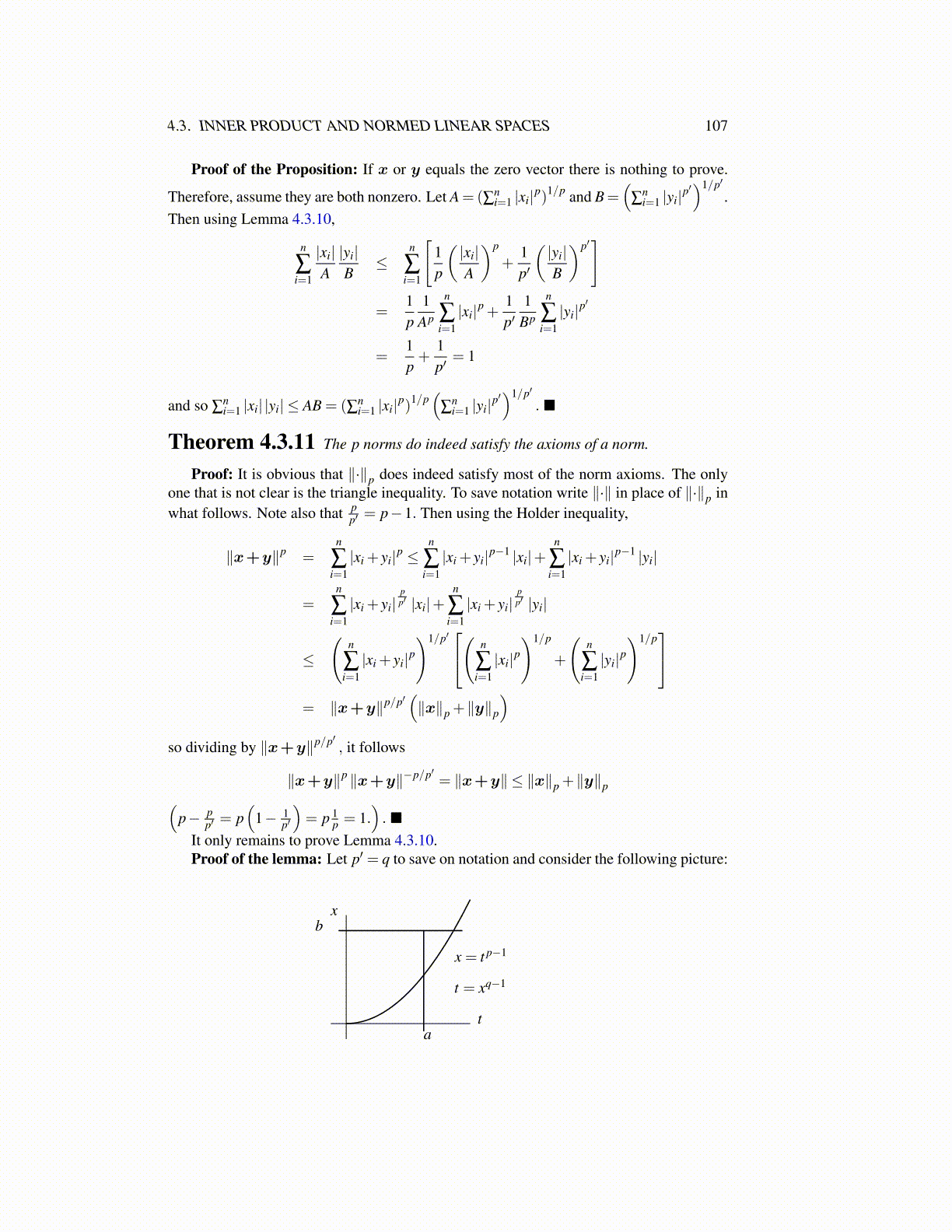
4.3. INNER PRODUCT AND NORMED LINEAR SPACES 107
Proof of the Proposition: If x or y equals the zero vector there is nothing to prove.
Therefore, assume they are both nonzero. Let A= (∑ni=1 |xi|p)1/p and B=
(∑
ni=1 |yi|p
′)1/p′
.Then using Lemma 4.3.10,
n
∑i=1
|xi|A|yi|B
≤n
∑i=1
[1p
(|xi|A
)p
+1p′
(|yi|B
)p′]
=1p
1Ap
n
∑i=1|xi|p +
1p′
1Bp
n
∑i=1|yi|p
′
=1p+
1p′
= 1
and so ∑ni=1 |xi| |yi| ≤ AB = (∑n
i=1 |xi|p)1/p(
∑ni=1 |yi|p
′)1/p′
. ■
Theorem 4.3.11 The p norms do indeed satisfy the axioms of a norm.
Proof: It is obvious that ∥·∥p does indeed satisfy most of the norm axioms. The onlyone that is not clear is the triangle inequality. To save notation write ∥·∥ in place of ∥·∥p inwhat follows. Note also that p
p′ = p−1. Then using the Holder inequality,
∥x+y∥p =n
∑i=1|xi + yi|p ≤
n
∑i=1|xi + yi|p−1 |xi|+
n
∑i=1|xi + yi|p−1 |yi|
=n
∑i=1|xi + yi|
pp′ |xi|+
n
∑i=1|xi + yi|
pp′ |yi|
≤
(n
∑i=1|xi + yi|p
)1/p′( n
∑i=1|xi|p
)1/p
+
(n
∑i=1|yi|p
)1/p
= ∥x+y∥p/p′(∥x∥p +∥y∥p
)so dividing by ∥x+y∥p/p′ , it follows
∥x+y∥p ∥x+y∥−p/p′ = ∥x+y∥ ≤ ∥x∥p +∥y∥p(p− p
p′ = p(
1− 1p′
)= p 1
p = 1.). ■
It only remains to prove Lemma 4.3.10.Proof of the lemma: Let p′ = q to save on notation and consider the following picture:
b
a
x
t
x = t p−1
t = xq−1